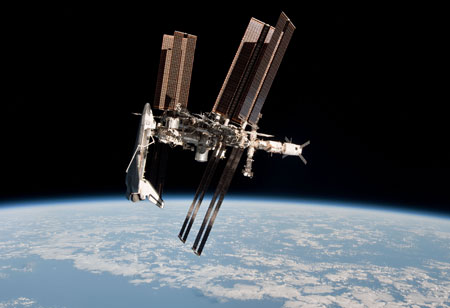THANK YOU FOR SUBSCRIBING
The Perfect Delivery Agent for the Astronauts in Space
The Japanese Vehicle has now fulfilled eight successful trips to the ISS and back. It is currently upgrading to a better and more extensive version to carry more goods both ways and make a freight back from predicted "Lunar Gateway"

By
Apac CIOOutlook | Tuesday, November 05, 2019
Stay ahead of the industry with exclusive feature stories on the top companies, expert insights and the latest news delivered straight to your inbox. Subscribe today.
The Japanese Vehicle has now fulfilled eight successful trips to the ISS and back. It is currently upgrading to a better and more extensive version to carry more goods both ways and make a freight back from predicted "Lunar Gateway".
FREMONT, CA: To stay for a long time on the International Space Station (ISS), a regular supply of food, clothes, battery packs, and most of all, coffee need to be planned. Since there are no Starbucks in space to buy a latte whenever the work gets hectic, the supply should be sent up to the station regularly. It requires meticulous planning and a great vehicle to fulfill this trip.
Japan’s resupply spacecraft, Kounotori, officially called the H-II Transfer Vehicle (HTV), is the latest unmanned vehicle which has effectively completed eight rides and has also collected refuse on the way back. The HTV reaches the ISS aboard the Mitsubishi Heavy Industries (MHI) ’s H-IIB launch vehicle.
MHI coordinates with up to 300 companies to collect the vehicle’s 1.2 million parts, and the modules are manufactured separately and assembled at Japan Aerospace Exploration Agency (JAXA) ’s Tanegashima Space Center. The Kounotori has a pressurized carrier for the transport of daily supplies, like fresh food, materials for experiments, and an unpressurized chamber for the storage of large hardware and supplies, this is one among the unique features of the HTV.
Speaking of the HTVs unique features, the most crucial one is the method by which it docks to and out of the ISS. The docking mechanism has allowed the vehicle to make long round trips. This method proposed by the Japanese engineers is called “Berthing” and “Capturing” is unlike the procedure followed by National Aeronautics and Space Administration (NASA), but also by Elon Musk with SpaceX.
The Japanese docking method works with a robotic arm capturing and maneuvering the vehicle into the exact position for berthing. The countless collaborations and experimentations have resulted in the formation of the Japanese Technique. The U.S. has also adopted a similar approach for SpaceX’s Dragon and Northrop Grumman’s Cygnus unmanned resupply spacecraft that moreover fulfills deliveries to the ISS.
According to JAXA, a new space freighter is in the design stages; it will carry 5.8 tonnes of payload, which is 50 percent more than its predecessor. The more original version will have a bigger solar panel, which has larger solar cells to harness greater power for operations. Its design is not only done by keeping only ISS in the head but also, for the “Lunar Gateway.” With the new HTV-X, Japan will be stepping up to continue supplying a lifeline for space dwellers for many years to come.
Check out: Top Aerospace & Defense Companies





